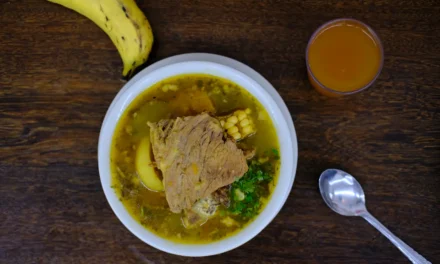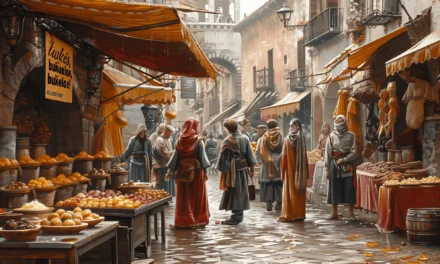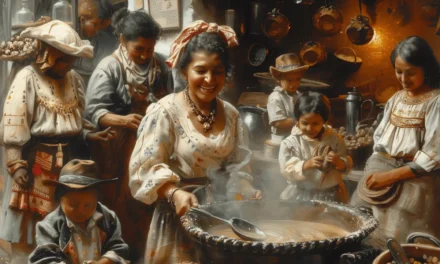A History of Sugar: From the Canaries to Hispaniola
Over the years, sugar became a luxury good increasingly in demand by European royalty and aristocrats. In response to the growing demand from European royalty and aristocrats, sugar cane plantations spread throughout the overseas territories of Spain and Portugal. By the 15th century, Territories such as the Canary Islands were the main sugar suppliers for Europe1.
On his second voyage, Columbus carried sugar cane from the Canary Islands to Hispaniola in 1493, along with other crops, to supply the settlement founded on the first voyage2.
Sugar, Enslaved, and Sugar Mills: Colonial Colombia’s Primary Plantation
It is believed that the first sugarcane crop in Colombia was in Santa Marta, Pedro de Heredia had crops in Azúa, and after being appointed lieutenant of Pedro de Badillo in Santa Marta, which also had a crop in San Juan de Maguana, they were able to leave a small footprint2.
What is known with certainty is that with the founding of Cartagena, Pedro de Heredia brought to this jurisdiction the right to establish a free sugar mill, which should provide him and his heir with plenty of sweeteners in life2.
Throughout the colonial period, several farm-related changes were necessary to help improve production on the farms. After the conquest, the indigenous population decreased considerably, providing the need for new workers in the fields3.
Enslaved people entered the scene, who were partly assigned to develop agricultural work, considering that they were more resistant to the harsh working conditions. People have been raising livestock and farming in these valleys for a long time, and we figured it would make more sense to move them to these areas3.
The Hard Work of Making Sugar: Life in the Sugar Mill
Many unfortunate enslaved had little choice in the matter of being assigned to work in the sugar mill. Just as importantly, many enslaved people who were assigned to the mill often had to shoulder the extra responsibility of being left in charge of the production facility when their owners were away3.
High-purity white sugar was an expensive luxury reserved for royalty, aristocrats, and great merchants and traders. Workers around the plantations and sugar cane mills began using other sugar production products1.
The work in the plantations and sugar mills was carried out by enslaved Africans in most cases. To work on the plantations, it became necessary to look for food that was easy to find, easy to consume, and with a high content of calories to satisfy the needs of the enslaved people. By fulfilling these characteristics, sugarcane became an essential part of their diet4.
A Sweet Memory: The Legacy of Colombian Panela
During the colonial period, panela was casually swinging from the saddlebags of traders and merchants, ready to be exchanged for various goods. Poetically put, the cocoa beans, liquor, salt, and flour rode alongside their sweet counterpart in a steady jingle-jangle across the roads of the Americas. With the warmth of a smile and good-natured curiosity, these traders brought the joy of the sweet nectar of panela to every remote village and mine along their path of commerce. The convenient, transportable nature of panela made it an ideal currency compared to more cumbersome payments5.
Most of the production today takes place in the valleys between the mountains. During the colony times, these lush valleys served as the pantry to feed the appetite of the most important towns and government councils and provide a safe haven to many weary travelers. It’s amazing how these valleys have stood the test of time and continue to provide nourishment to this day3.

Unlike most sugar cane types cultivated on large plantations, sugar cane planted on small farms in Colombia produces sweeter, amber-colored panela. Just as small mills and plants produce panela on a smaller scale than big mills and factories6.
- Mintz, S. W. (2013). Time, Sugar and Sweetness. En C. Counihan, & P. Van Esterik, Food and culture : a reader (págs. 91-103). Nueva York: Routledge.[↩][↩]
- Ramos Gómez, O. G. (2005). CAÑA DE AZÚCAR EN COLOMBIA . Revista de Indias, 49-78.[↩][↩][↩]
- Navarrete, M. C. (2005). Génesis y desarrollo de la esclavitud en Colombia : Siglos XVI y XVII. Cali: Universidad del Valle.[↩][↩][↩][↩]
- Villapoll, N. (2006). Hábitos alimentarios africanos en América Latina. En Á. e. Latina, Manuel Moreno Fraginals (págs. 325-336). México D.F.: Siglo XXI Editores.[↩]
- Jiménez Meneses, O. (2000). La conquista del estómago. En Geografía Humana de Colombia (Vol. Tomo VI: Los afrocolombianos). Bogotá: Instituto Colombiano de Antropología e Historia INCAH; Instituto Colombiano de Cultura Hispánica.[↩]
- Bohórquez Guevara, K. S. (2019, Septiembre 6). MINAGRO INVERTIRÁ $1.200 MILLONES PARA INCENTIVAR EL CONSUMO DE PANELA. Retrieved from Agronegocios: https://www.agronegocios.co/agricultura/minagro-invertira-1200-millones-para-incentivar-el-consumo-de-panela-2904986[↩]




